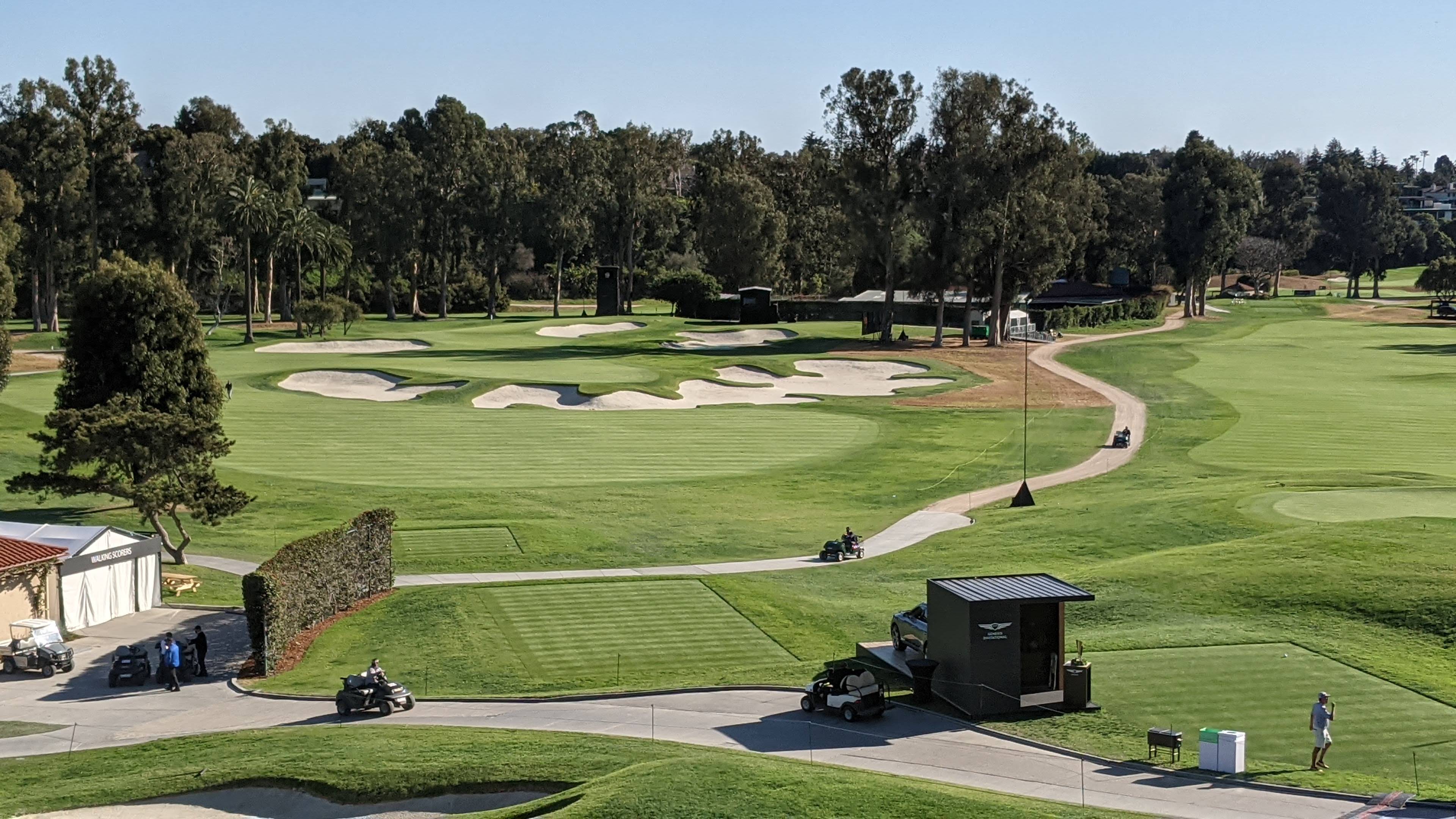PACIFIC PALISADES, Calif. — Short, drivable par 4s are easy, right?
Well, not always. No. 10 at Riviera Country Club is one of the classic short holes in golf, confounding the PGA Tour’s best each year in the Genesis Invitational. It seems as though it should be an easy birdie for Tour pros, but disaster is always lurking.
Besides having hosted the Genesis – formerly the Los Angeles Open – for 57 years, Riviera has been the site of three men’s majors: the 1948 U.S. Open (Ben Hogan won), the 1983 PGA Championship (Hal Sutton) and the 1995 PGA Championship (Steve Elkington). With challenges like No. 10, it’s no wonder the majors were won by some of the premium ballstrikers of their eras. Adam Scott – another premier swinger of the club – won the Genesis Invitational last year.
Riviera was designed by George C. Thomas Jr. and William P. Bell, and it ranks No. 18 on Golfweek’s Best list of Classic Courses built before 1960 in the United States. It opened in 1927 when golf balls didn’t fly anywhere near as far as they do these days, and while the challenges at No. 10 have changed a bit over the years, the hole is no less daunting just because of the short overall length. Simply put, this hole is in the players’ heads.
Thanks to several maps provided by Puttview – the maker of detailed yardage books for more 30,000 courses around the world – we can see exactly the challenges that face the players this week. The Puttview books include topographic maps of the green that show the surfaces in detail, and the pages for No. 10 at Riviera are packed with trouble.
The 315-yard, par-4 10th is easily in reach for most Tour players swinging driver or even 3-wood, but the green is a tiny sliver sloping dramatically front to back and angled from front left to back right. Three greenside bunkers are anything but easy escapes, as players frequently blast from one sand trap to another – great fun to watch, terrifying if you’re on the leaderboard.
Players face a choice off the tee: lay up short of a fairway bunker on the left that’s 254 yards away from the tee to set up a longer wedge shot with more spin, or send it flying 271 yards over the trap to hopefully set up a shorter pitch straight up the length of the green. But a cluster of trees guards the left landing area in the rough, and those greenside traps are always in play.
There’s a chance to drive it onto the front left of the green 287 yards off the tee, but it’s also entirely common to watch a tee ball skip over the green and into a tough spot. When the pin is in the back right of the green, long and left – facing a pitch over the back bunker – is no place to be.
It’s not uncommon to see players run their approach shots across the green or come up short and see the ball trickle back down the greenside slopes – assuming they have missed the bunkers. All in all, it’s one of the trickiest short approach shots in golf.
How do the pros plan to play it this week in the Genesis? Check out their responses:

